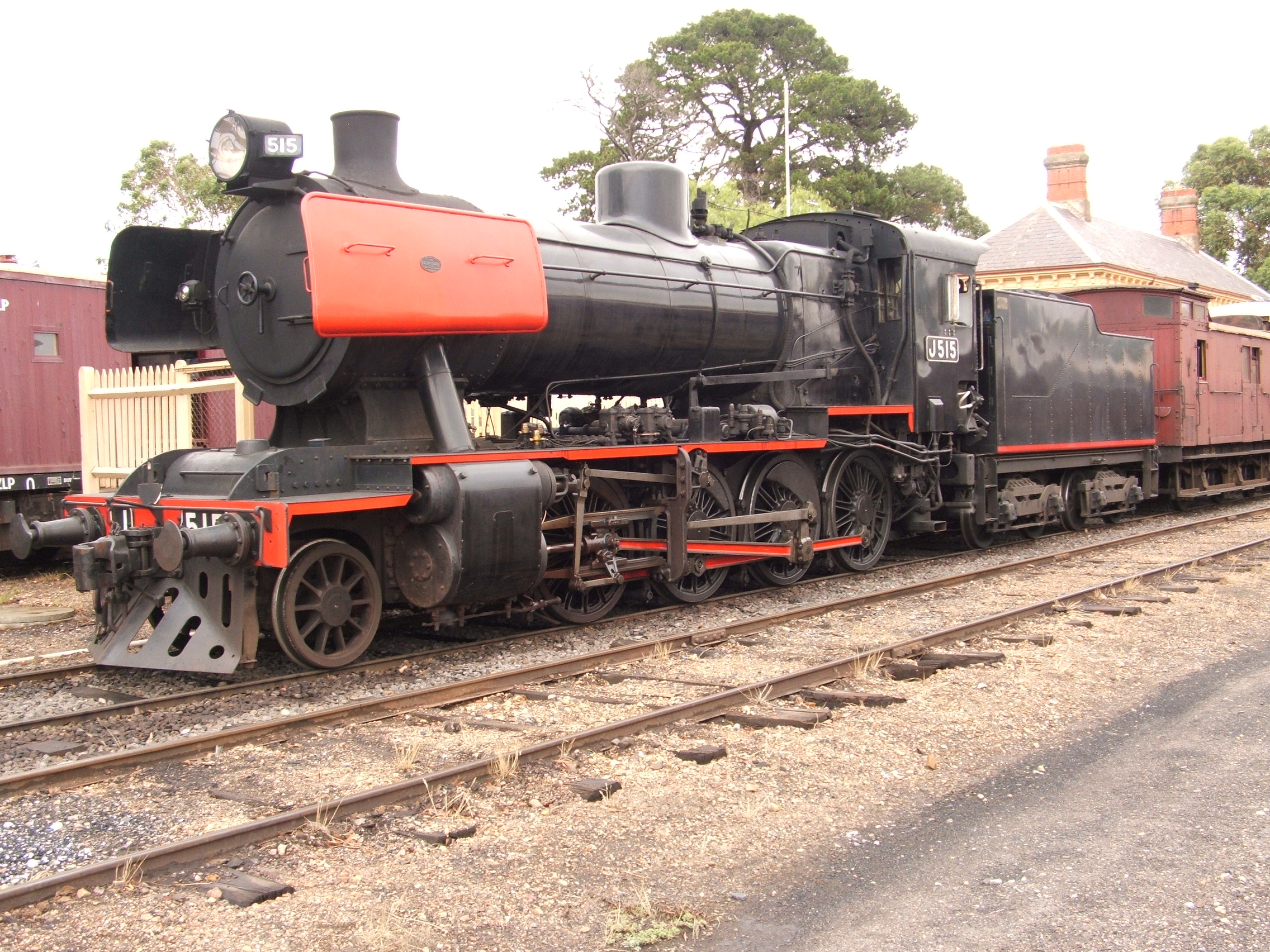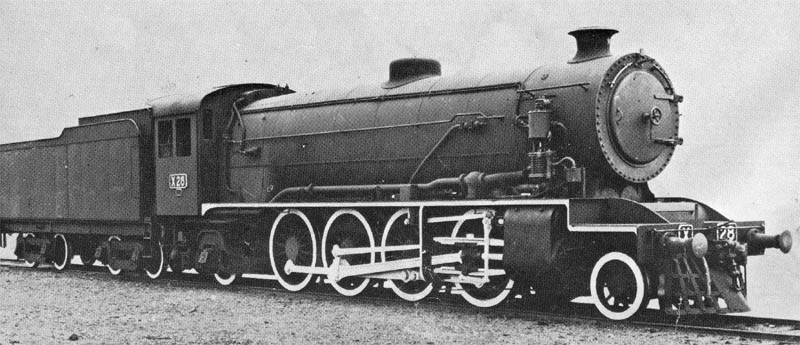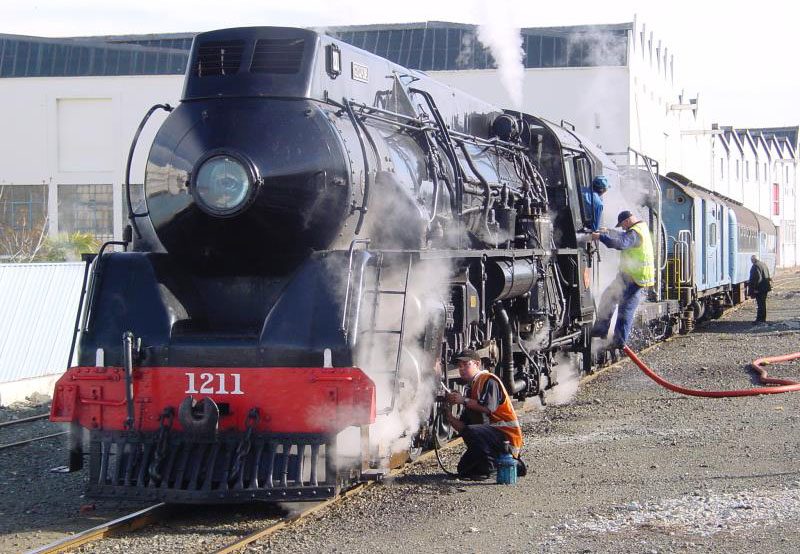|
2-8-0
Under the Whyte notation for the classification of steam locomotives, represents the wheel arrangement of two leading wheels on one axle, usually in a leading truck, eight powered and coupled driving wheels on four axles, and no trailing wheels. In the United States and elsewhere, this wheel arrangement is commonly known as a Consolidation, after the Lehigh and Mahanoy Railroad’s ''Consolidation'', the name of the first 2-8-0.White, John H. Jr. (1968). ''A history of the American locomotive; its development: 1830-1880''. New York: Dover Publications, p. 65. The notation 2-8-0T indicates a tank locomotive of this wheel arrangement, the "T" suffix indicating a locomotive on which the water is carried in side-tanks mounted on the engine rather than in an attached tender. The Consolidation represented a notable advance in locomotive power. After 1875, it became "the most popular type of freight locomotive in the United States and was built in greater quantities than any other si ... [...More Info...] [...Related Items...] OR: [Wikipedia] [Google] [Baidu] |
South West African 2-8-0T
The South West African 2-8-0T of 1907 was a steam locomotive from the German South West Africa era. Between 1907 and 1910, the ''Lüderitzbucht Eisenbahn'' (Lüderitzbucht Railway) in German South West Africa placed 23 tank locomotives with a 2-8-0 Consolidation type wheel arrangement in service. After the First World War, when all railways in the territory came under the administration of the South African Railways in 1922, four of these locomotives still survived. They were not classified or renumbered but were simply referred to as the Eight-Coupled Tanks.Espitalier, T.J.; Day, W.A.J. (1948). ''The Locomotive in South Africa - A Brief History of Railway Development. Chapter VII - South African Railways (Continued).'' South African Railways and Harbours Magazine, January 1948. pp. 30-31. ''Lüderitzbucht Eisenbahn'' Construction of a Cape gauge railway line from Lüderitzbucht on the Atlantic coast to Keetmanshoop commenced in 1905. The ''Lüderitzbucht Eisenbahn'', later the ... [...More Info...] [...Related Items...] OR: [Wikipedia] [Google] [Baidu] |
2-8-2
Under the Whyte notation for the classification of steam locomotives, represents the wheel arrangement of two leading wheels on one axle, usually in a leading truck, eight powered and coupled driving wheels on four axles and two trailing wheels on one axle, usually in a trailing truck. This configuration of steam locomotive is most often referred to as a Mikado, frequently shortened to Mike. At times it was also referred to on some railroads in the United States of America as the McAdoo Mikado and, during World War II, the MacArthur. The notation 2-8-2T indicates a tank locomotive of this wheel arrangement, the "T" suffix indicating a locomotive on which the water is carried in tanks mounted on the engine rather than in an attached tender. Overview The 2-8-2 wheel arrangement allowed the locomotive's firebox to be placed behind instead of above the driving wheels, thereby allowing a larger firebox that could be both wide and deep. This supported a greater rate of combustio ... [...More Info...] [...Related Items...] OR: [Wikipedia] [Google] [Baidu] |
Baldwin Locomotive Works
The Baldwin Locomotive Works (BLW) was an American manufacturer of railroad locomotives from 1825 to 1951. Originally located in Philadelphia, it moved to nearby Eddystone, Pennsylvania, in the early 20th century. The company was for decades the world's largest producer of steam locomotives, but struggled to compete as demand switched to diesel locomotives. Baldwin produced the last of its 70,000-plus locomotives in 1951, before merging with the Lima-Hamilton Corporation on September 11, 1951, to form the Baldwin-Lima-Hamilton Corporation. The company has no relation to the E.M. Baldwin and Sons of New South Wales, Australia, a builder of small diesel locomotives for sugar cane railroads. History: 19th century Beginning The Baldwin Locomotive Works had a humble beginning. Matthias W. Baldwin, the founder, was a jeweler and whitesmith, who, in 1825, formed a partnership with machinist David H. Mason, and engaged in the manufacture of bookbinders' tools and cylinders fo ... [...More Info...] [...Related Items...] OR: [Wikipedia] [Google] [Baidu] |
New South Wales D50 Class Locomotive
The D50 class is an old class of 2-8-0 steam locomotives built for the New South Wales Government Railways of Australia. History The first was delivered in May 1896 by Beyer, Peacock and Company with further orders over the next 20 years seeing the class number 280. Their second and third coupled wheel tyres were flangeless to reduce curve friction. During the First World War, an additional 10 locomotives of this class were under construction at the North British Locomotive Company, but these types of engines were not delivered to Australia, being taken over by the British War Office for the Royal Engineers Railway Operating Division. After the war, they were offered back to the New South Wales Government Railways at higher than new prices and in a badly worn condition. They were declined and 8 locomotives were subsequently acquired by the in Belgium and, following rebuilding, assigned to work coal trains along the Meuse Valley. The 2 other locomotives were acquired by S. ... [...More Info...] [...Related Items...] OR: [Wikipedia] [Google] [Baidu] |
Queensland C15 Class Locomotive
The Queensland Railways C15 class locomotive was a class of 2-8-0 steam locomotives operated by the Queensland Railways. History In 1879, the Queensland Railway’s Southern & Western Railways took delivery of one Baldwin Locomotive Company 2-8-0 locomotive, being placed in service as no. 41 hauling services up the Main Range. A similar example as imported jointly by JA Overend and Company and Garget and Company for sections 1 and 2 of the Stanthorpe extension. It was purchased by the Queensland Railways entering service as no. 42. No. 41 was transferred to the Great Northern Railway (Townsville), returning south in 1886 as no. 104. Both were reboilered in 1900. They were similar to the New Zealand Railways T class. Per Queensland Railway's classification system they were designated the C15 class, the C representing they had four driving axles, and the 15 the cylinder A cylinder (from ) has traditionally been a three-dimensional solid, one of the most basic of curvil ... [...More Info...] [...Related Items...] OR: [Wikipedia] [Google] [Baidu] |
Queensland C13 Class Locomotive
The Queensland Railways C13 class locomotive was a class of 2-8-0 steam locomotives operated by the Queensland Railways. History In 1883, Dübs & Co delivered six 2-8-0 to the Queensland Railways. Per Queensland Railway's classification system they were designated the C13 class, C representing they had four driving axles, and the 13 the cylinder diameter in inches. Four were delivered to the Maryborough Railway and two to the Bundaberg Railway. They late operated coal trains on the Redbank-Bundamba Loop Line The Redbank-Bundamba Loop Line was a branch line off the Main Line railway near Brisbane, Queensland, Australia. It was built to convey coal from the Bundamba and Redbank areas of the Ipswich coalfields. The Redbank-Bundamba Loop Line ran genera .... Class list References {{QueenslandLocos Dübs locomotives Railway locomotives introduced in 1883 C13 2-8-0 locomotives 3 ft 6 in gauge locomotives of Australia ... [...More Info...] [...Related Items...] OR: [Wikipedia] [Google] [Baidu] |
Whyte Notation
Whyte notation is a classification method for steam locomotives, and some internal combustion locomotives and electric locomotives, by wheel arrangement. It was devised by Frederick Methvan Whyte, and came into use in the early twentieth century following a December 1900 editorial in ''American Engineer and Railroad Journal''. The notation was adopted and remains in use in North America and the United Kingdom to describe the wheel arrangements of steam locomotives (in the latter case also for diesel and electric locomotives), but for modern locomotives, multiple units and trams it has been supplanted by the UIC system in Europe and by the AAR system (essentially a simplification of the UIC system) in North America. Structure of the system Basic form The notation in its basic form counts the number of leading wheels, then the number of driving wheels, and finally the number of trailing wheels, numbers being separated by dashes. For example, a locomotive with two lea ... [...More Info...] [...Related Items...] OR: [Wikipedia] [Google] [Baidu] |
North British Locomotive Company
The North British Locomotive Company (NBL, NB Loco or North British) was created in 1903 through the merger of three Glasgow locomotive manufacturing companies; Sharp, Stewart and Company (Atlas Works), Neilson, Reid and Company (Hyde Park Works) and Dübs and Company (Queens Park Works), creating the largest locomotive manufacturing company in Europe and the British Empire. Its main factories were located at the neighbouring Atlas and Hyde Park Works in central Springburn, as well as the Queens Park Works in Polmadie. A new central Administration and Drawing Office for the combined company was completed across the road from the Hyde Park Works on Flemington Street by James Miller in 1909, later sold to Glasgow Corporation in 1961 to become the main campus of North Glasgow College (now Glasgow Kelvin College). The two other Railway works in Springburn were St. Rollox railway works, owned by the Caledonian Railway and Cowlairs railway works, owned by the North British Railway. ... [...More Info...] [...Related Items...] OR: [Wikipedia] [Google] [Baidu] |
Beyer, Peacock & Company
Beyer, Peacock and Company was an English railway locomotive manufacturer with a factory in Openshaw, Manchester. Founded by Charles Beyer, Richard Peacock and Henry Robertson, it traded from 1854 until 1966. The company exported locomotives, and machine tools to service them, throughout the world. Founders German-born Charles Beyer had undertaken engineering training related to cotton milling in Dresden before moving to England in 1831 aged 21. He secured employment as a draughtsman at Sharp, Roberts and Company's Atlas works in central Manchester, which manufactured cotton mill machinery and had just started building locomotives for the Liverpool and Manchester Railway. There he was mentored by head engineer and prolific inventor of cotton mill machinery, Richard Roberts. By the time he resigned 22 years later he was well established as the company's head engineer; he had been involved in producing more than 600 locomotives. Richard Peacock had been chief engineer of ... [...More Info...] [...Related Items...] OR: [Wikipedia] [Google] [Baidu] |
Orenstein & Koppel
Orenstein & Koppel (normally abbreviated to "O&K") was a major Germany, German engineering company specialising in railway vehicles, escalators, and heavy equipment. It was founded on April 1, 1876 in Berlin by Benno Orenstein and Arthur Koppel. Originally a general engineering company, O&K soon started to specialise in the manufacture of railway vehicles. The company also manufactured heavy equipment and escalators. O&K pulled out of the railway business in 1981. Its escalator-manufacturing division was spun off to the company's majority shareholder at the time, Krupp, Friedrich Krupp AG Hoesch-Krupp, in 1996, leaving the company to focus primarily on construction machines. The construction-equipment business was sold to New Holland Construction, at the time part of the Fiat Group, in 1999. Founding and railway work The Orenstein & Koppel Company was a mechanical engineering, mechanical-engineering firm that first entered the railway-construction field, building locomotives a ... [...More Info...] [...Related Items...] OR: [Wikipedia] [Google] [Baidu] |
0-8-0
Under the Whyte notation for the classification of steam locomotives, represents the wheel arrangement of no leading wheels, eight powered and coupled driving wheels on four axles and no trailing wheels. Locomotives of this type are also referred to as eight coupled. Overview Examples of the 0-8-0 wheel arrangement were constructed both as tender and tank locomotives. The earliest locomotives were built for mainline haulage, particularly for freight, but the configuration was later also often used for large switcher (shunter) types. The wheel arrangement provided a powerful layout with all engine weight as adhesive weight, which maximised the tractive effort and factor of adhesion. The layout was generally too large for smaller and lighter railways, where the more popular wheel arrangement would often be found performing similar duties. Usage Austria Two 0-8-0 locomotives were delivered from Andre Koechlin & Cie in Mulhouse to the Austrian Southern Railway in 1862. They wer ... [...More Info...] [...Related Items...] OR: [Wikipedia] [Google] [Baidu] |
Tank Locomotive
A tank locomotive or tank engine is a steam locomotive that carries its water in one or more on-board water tanks, instead of a more traditional tender. Most tank engines also have bunkers (or fuel tanks) to hold fuel; in a tender-tank locomotive a tender holds some or all of the fuel, and may hold some water also. There are several different types of tank locomotive, distinguished by the position and style of the water tanks and fuel bunkers. The most common type has tanks mounted either side of the boiler. This type originated about 1840 and quickly became popular for industrial tasks, and later for shunting and shorter-distance main line duties. Tank locomotives have advantages and disadvantages compared to traditional locomotives that required a separate tender to carry needed water and fuel. History Origins The first tank locomotive was the ''Novelty'' that ran at the Rainhill Trials in 1829. It was an example of a ''Well Tank''. However, the more common for ... [...More Info...] [...Related Items...] OR: [Wikipedia] [Google] [Baidu] |





.jpg)

